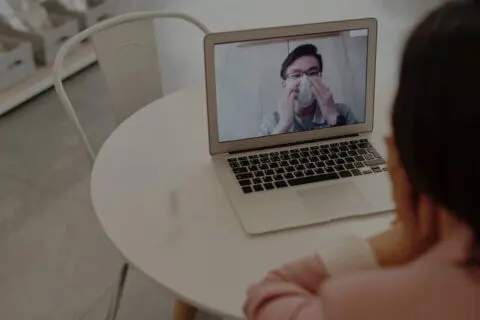If you are considering the convenience of telehealth, you might wonder how a physical examination is conducted during a virtual visit.
Here’s a detailed look at how it works:
Preparation for a Telemedicine Consultation
Proper preparation can significantly enhance the success of your video visit. Here are some steps to ensure you are ready for your telemedicine consultation:
- Lighting: Good lighting is crucial. For the best image quality, be in a room with natural outdoor lighting. Alternatively, use a good lamp with a white bulb.
- Vital Signs: Have your vital signs ready at the time of the consultation:
- Thermometer: Either glass or electronic. Clean it with soap or alcohol if it’s glass.
- Pulse Monitor: A wristband or chest band for measuring your pulse.
- Blood Pressure Cuff: An automatic cuff for measuring blood pressure.
- Glucometer: If you have diabetes, have your blood sugar readings available.
- Pulse Oximeter: A small device that slips onto a finger to measure oxygen saturation. Some wearable devices, like the Apple Watch starting from Series 6, can measure your blood oxygen level.
- Laboratory Reports: If you have had recent laboratory testing, upload your lab report(s) to your electronic medical record (EMR). An EMR is like a medical chart used by a doctor’s office or hospital but online rather than on paper.
The Actual Physical Exam
Seeing and talking to a patient via video alone provides the remote doctor with valuable information about the patient’s condition. It can help determine:
- If the patient appears ill
- If the patient is in distress
- The color and perfusion of the skin
- Clarity of speech
- Breathing difficulties (e.g., not speaking in full sentences)
- Confusion
- The sound of their cough
- Social or living situation
For a more focused physical exam, the patient can assist the doctor by:
- Palpation or percussion of certain body parts
- Ranging painful joints
- Focusing the camera on relevant body parts, like skin lesions, conjunctiva, or the back of the throat
- Aiding with a neurological exam (e.g., finger-to-nose testing or having a family member test the skin sensation of certain body parts)
Almost any basic physical exam can be performed remotely with the help of either the patient or family members. Listening to the lung or heart is not yet routinely possible through telehealth, but wearable technology is rapidly advancing, and soon, even remote ultrasounds and auscultation will likely be possible.
However, despite the advancement of telehealth technology, some chief complaints still require an in-person visit or even an emergent trip to the ER (e.g., acute chest pain, severe abdominal pain, or dehydration). In those cases, telehealth services like QuickMD urgent care may serve as a triage tool to advise patients and guide them to the appropriate place for evaluation and treatment.
Online Physical Exams with QuickMD
Did you know? QuickMD offers state-of-the-art, HIPAA-compliant telemedicine video technology, crisp video images, and highly trained doctors who can help diagnose your condition remotely.
Get in touch with us today to schedule an appointment for your next physical exam.




